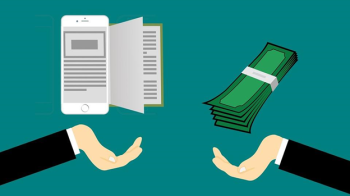The U.S. Department of Education has been the target of criticism for their lack of progress in implementing policies that would help students succeed in school and prepare them to be productive members of society.
This Video Should Help:
Introduction
Restaurants are one type of business that are inspected by the health department. The state inspects restaurants to make sure they are following food safety policies and procedures. Grades are given to restaurants based on their inspection scores.
The Development of Education Policy
Education policy covers a wide range of topics, from early childhood education to higher education. It includes everything from decisions about which students should be allowed to attend which schools, to how much money should be spent on education, to what type of curriculum should be taught in the classroom.
There is no one answer to the question of how education policy should be developed. Different people have different opinions on the best way to develop policies that will improve the quality of education for all students.
One way to develop education policy is to gather input from a variety of stakeholders. This includes educators, parents, students, and taxpayers. Each stakeholder group has its own interests and goals when it comes to education. For example, educators may be interested in policies that improve teacher pay and working conditions, while parents may be interested in policies that improve school safety or increase the availability of extracurricular activities.
Another way to develop education policy is to look at what other states are doing. Many states have similar educational systems, so it can be helpful to see what policies have been successful in other states. This can give policymakers ideas for new policies that might work well in their own state.
Finally, it is important to keep up with changes in society and the economy when developing education policy. For example, as more families move away from traditional 9-5 jobs, it becomes more difficult for parents to drop their children off at school and then pick them up after work. This may lead policymakers to consider reforms such as longer school days or shorter summer break
The Impact of Education Policy
In the United States, education policy has been made at the federal, state, and local level. The No Child Left Behind Act (NCLB) was one such example of a federal education policy. NCLB was signed into law in 2001 and aimed to have all students reading and math proficiency by the year 2014. The law also required that states test all students in grades 3-8 annually in reading and math and required schools to make Adequate Yearly Progress (AYP) toward meeting proficiency goals. Schools that failed to make AYP for two consecutive years were labeled as “in need of improvement” and faced a range of possible interventions, including closure.
There has been much debate surrounding the effectiveness of NCLB and other education policies. Some people argue that these policies have had a positive impact on education by holding schools accountable for student learning and setting high standards for all students. Others argue that these policies have had a negative impact on education by causing teachers to teach to the test and leading to an increase in standardized testing.
What do you think? Have education policies had a positive or negative impact on schooling in the United States? Why?
The Future of Education Policy
The future of education policy is always a hot topic. with new technologies and ways of learning emerging all the time, it can be hard to keep up with the latest developments. Here are five things to look out for in the world of education policy in the coming years.
1. A focus on mental health
With increasing awareness of mental health issues among young people, there is likely to be a greater focus on this area in education policy. This could result in more support being available for students struggling with mental health problems, as well as more training for teachers on how to deal with these issues.
2. A move towards ‘personalized learning’
With more and more educational resources available online, there is an increasing move towards “personalized learning”. This means that students can tailor their learning experience to their own individual needs and interests, rather than following a one-size-fits-all curriculum.
3. An emphasis on ’21st century skills’
As the world becomes increasingly digitized, there is an emphasis on developing so-called “21st century skills” such as creativity, collaboration, and problem-solving. Many educational institutions are looking for ways to incorporate these skills into their curriculum.
4. An increase in online learning
With the rise of online learning platforms such as Coursera and Udemy, there is likely to be an increase in the number of people option
The Pros and Cons of Education Policy
Education policies are often created with the best of intentions, but they donufffdt always have the desired effect. In this article, we will explore some of the pros and cons of education policy.
One of the main goals of education policy is to improve student outcomes. Unfortunately, itufffds not always clear how well policies are accomplishing this goal. It can take years for the effects of a policy to be fully realized, and by that time, the political landscape may have changed completely. This makes it difficult to hold politicians accountable for the successes or failures of education policy.
Another potential downside of education policy is that it can be very disruptive. New policies can cause confusion and anxiety for students, parents, and educators alike. It can be difficult to adapt to new methods or philosophies, and there is always a period of adjustment when new policies are put in place.
On the other hand, education policy can also lead to positive change. By holding policymakers accountable for student outcomes, we can ensure that more attention is paid to improving educational quality. And by making sure that new policies are based on evidence and data, we can avoid disruptions caused by well-meaning but ultimately misguided reform efforts.
The Different Types of Education Policy
Education policy is made at the federal, state, and local levels. It can be created by legislature, governors, school boards, and city councils. It impacts what is taught in schools, how resources are used, and the standards that educators are held to. Making and changing policy is a complex process that can take a long time.
There are many different types of education policy. Some focus on what students should learn (curriculum), some on how they should be assessed (accountability), some on how resources should be used (finance), and some on who should have access to education (equity). Many policies address more than one of these issues. For example, a curriculum policy might dictate what is taught in math class, but an accountability policy might dictate how students are graded on their math tests.
Education policies can be divided into two main categories: operational policies and strategic policies. Operational policies are specific rules or regulations that govern how something should be done. They often describe in detail what educators should do and how they should do it. Operational policies might include rules about curriculum, instruction, assessment, and school finance. Strategic policies, on the other hand, set goals or objectives for education and outline a general plan for achieving those goals. They donufffdt usually include specific details about how those goals should be met. Strategic policies might focus on topics like equity, access, or college and career readiness.
Making education policy is a complex process that requires careful consideration of the needs of students, educators, parents, administrators, and the community at large. Policymakers must also balance the competing demands of different interest groups while taking into account the ever-changing landscape of education.
The Benefits of Education Policy
Education policy can have a profound impact on students, teachers, and the general public. The right policies can improve outcomes for everyone involved in the educational system. There are a number of different education policy topics that are currently being debated. These include things like school vouchers, charter schools, and standardized testing.
The Drawbacks of Education Policy
There are many different ways to answer this question. Some people might say that the education system needs to be improved, while others might say that the government needs to invest more money in education. However, one development in education policy that has caused some people to question the effectiveness of the education system is the implementation of standardized tests.
Standardized tests are designed to assess how well students have learned the material that they have been taught in school. However, many people believe that these tests do not accurately measure a studentufffds knowledge. In addition, standardized tests often put pressure on students and teachers to perform well. This pressure can lead to cheating and can also cause students to focus more on getting good grades than on actually learning the material.
Another drawback of standardized testing is that it takes away from time that could be spent teaching other important subjects, such as history or science. In addition, some states have adopted policies that tie a teacherufffds salary to their studentsufffd test scores. This means that teachers may feel pressured to teach to the test instead of teaching for understanding.
Overall, there are both advantages and disadvantages to standardized testing. While these tests can be helpful in assessing student learning, they also have some drawbacks that need to be considered.
How Education Policy Can Be Improved
It is no secret that the United States education system is not currently meeting the needs of all students. In fact, according to a recent study, the U.S. ranks below average when compared to other developed countries. This is a wake-up call for policy makers to re-evaluate current policies and find ways to improve the system.
One way to improve education policy is by increasing funding for schools. Unfortunately, many states are facing budget cuts which means less money for schools. This can lead to larger class sizes, fewer resources, and less individualized attention for students. It is important for policy makers to find ways to increase funding for schools so that students can receive the best education possible.
Another way to improve education policy is by creating stricter accountability standards. Currently, there is no true way to measure how effective a school or teacher is. As a result, it is difficult to hold everyone accountable for student success. By creating stricter accountability standards, policy makers can ensure that everyone involved in the education system is doing their part to help students succeed.
It will take time and effort to improve the United States education system, but it is crucial that policy makers take action now. The future of our country depends on it.
Conclusion
In conclusion, the education policy was a success. The students had better grades and the people had more time to answer the question. The state did a great job in making sure that the policies were effective.
The “what is one major goal of u.s. economic foreign policy” is a question that has been asked many times, but the answer is not always clear. One major goal of U.S. economic foreign policy is to help other countries develop economically by providing loans, trade agreements, and infrastructure development.
External References-
https://en.wikipedia.org/wiki/Education_policy_of_the_United_States







